Image by Andy Stagg
Yinka Ilori is one of the most in-demand designers to come out of the UK in recent years. His colorful and bold designs tell stories through objects and urban spaces celebrating Nigerian and British culture as two halves of the same whole. A conversation about the role of design in society, family values, and the special gift he inherited from his mother and grandmother.
Hello Yinka, how are you?
Yinka Ilori: I’m doing okay. I try to stay positive and use the time in lockdown to learn new things and let my creativity flow. Every day I have to pause and reflect for a minute to remind myself that all this is really happening. It feels very surreal to me. The UK now has the second-highest death rate in Europe. So many people have lost loved ones, and the sheer scale of the pandemic is very hard to comprehend. But despite all the tragedy caused by the coronavirus, I also have the impression that especially the Londoners show a lot of solidarity and support each other. It’s actually the first time ever that I see the UK being that united.
To what extent has the pandemic affected you on a professional level?
Yinka Ilori: At the beginning of the year, we worked on some public space projects in Europe and internationally. Since COVID-19, everything has been put on hold. The projects are now postponed to next year, and there is still no guarantee that they will be realized in 2021 as all the people involved have lost a lot of money.
What kind of projects were you working on exactly?
Yinka Ilori: This year I got a lot of requests doing urban playgrounds, and I also designed an indoor skate park in Lille that was supposed to open in July. Then there were a few retail jobs for visual merchandising and store design. All projects were based on human interaction, so now I have to improvise and see how my work can look like in the next months or even years to come. My pieces usually revolve around human engagement, no matter if it’s a museum, an urban architectural space, or a piece of furniture. I think it’s an interesting time for the design community to develop solutions for public spaces that adjust to a post-pandemic world. So at the moment, I’m trying to figure out how I can create an exhibition or body of work that complies with social distancing requirements but still allows the experience of human connectedness. I’m also working on a homeware collection consisting of trays, tea mugs, plates, bowls, and tea towels. The lockdown has given me a chance to develop my brand a little further and make my work more accessible to consumers. It’s been a nice learning curve so far.
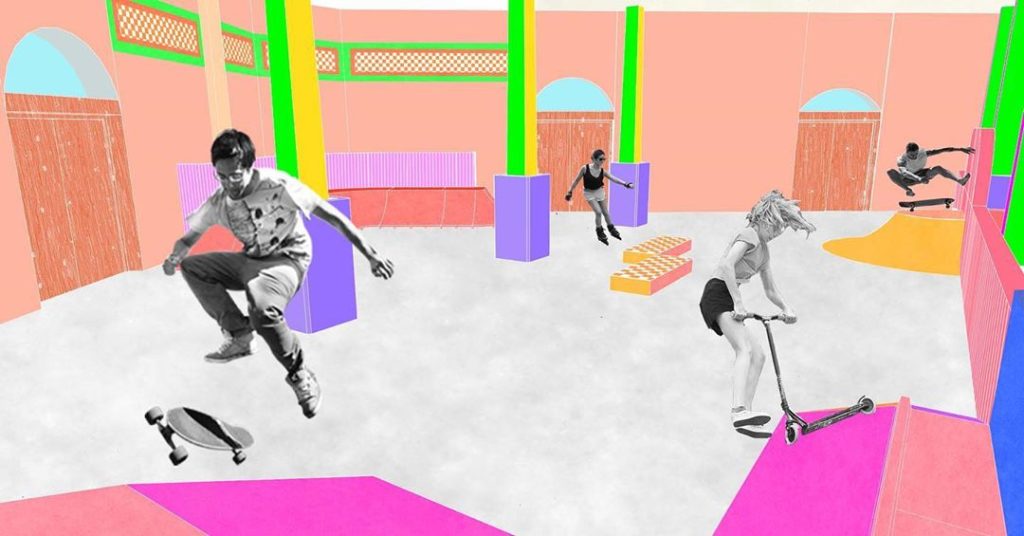
How do you think the design world will change and adjust to the pandemic?
Yinka Ilori: I think now is the time to rethink the purpose of design. It’s a call to action for the industry to reflect on the designer’s responsibility in society. Sometimes design can be very vain, but it’s about so much more than just creating beautiful things that can be exhibited at Paris or Milan Design Week. It’s creating objects and spaces that respond to society’s needs and the current situation. It has to be useful and make people feel safe during and after the pandemic. As design surrounds us every day, it’s also a powerful tool to initiate a dialog and raise awareness. Designers can engage with the environment and tackle broader social issues by forming a narrative around them that is thought-provoking.
You use storytelling in your work based on Nigerian sayings and parables, your parents told you as a child. Is there maybe one in particular that inspired you?
Yinka Ilori: There were several. When I was naughty as a child, my father always would give me a parable matching the situation. I call them words of wisdom. The parables are quite simple, but they always carry a deeper meaning. One, for example, is: It doesn’t matter how long the neck of a giraffe is, it still can’t see the future. As a kid, I remember my parents being quite strict. We weren’t allowed out that much. We had to do our homework and make sure we get good grades at school. We had to be respectful of our parents and family members. Respect in our household was fundamental, and nobody ever wanted to bring shame to the family’s surname. So my father used the parables to teach us about our family values.
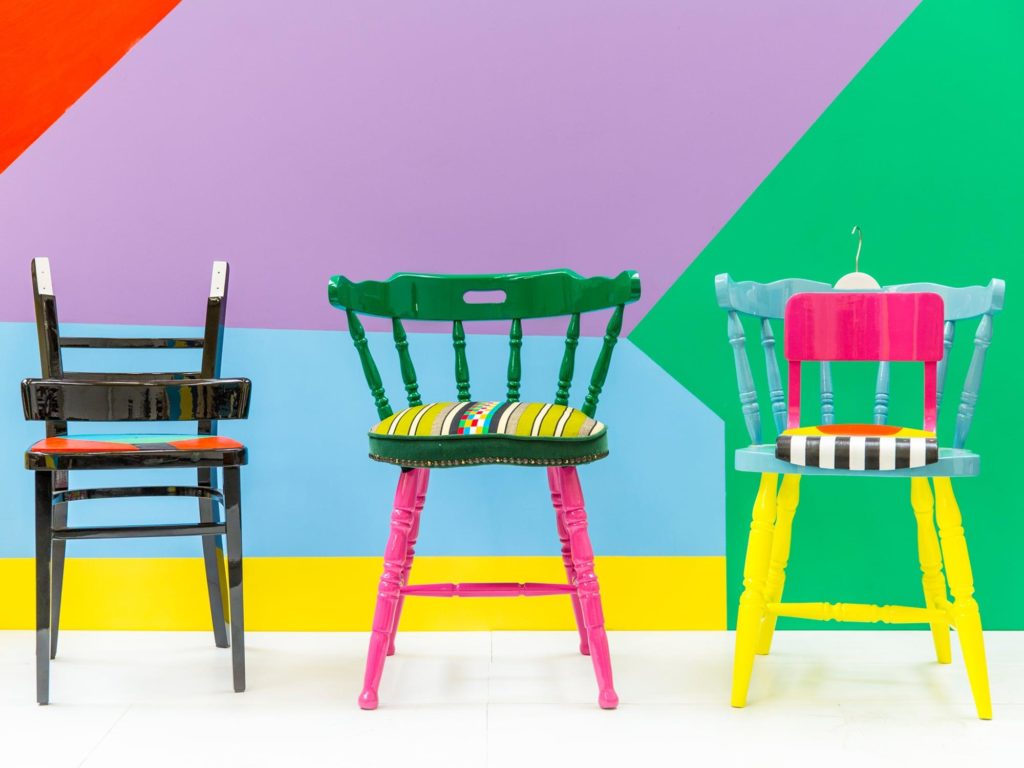
How do you translate the parables into a piece of work?
Yinka Ilori: I find these old chairs in London at car boot sales, or sometimes I buy them from charity shops, and then I transform them into something new. Every piece of antique furniture has its individual story, and if something is still intact after several decades, that speaks to its quality. When I start out designing, I think of specific keywords that represent the parable, and then I integrate them into the design. Sometimes that can be a little more obvious, sometimes it’s very subtle. I want the people to form their own personal relationship with the furniture, and I like to leave room for interpretation, but each object has a narrative. In my collection, “If Chairs Could Talk,” I designed chairs based on real-life characters from my school days and their individual stories. Another important aspect of my work is the use of humor and bold colors. I think that design is often far too serious when it actually should make you smile. There is, for example, the parable: Any child who has two ears should listen. So I included two ears in the design of the chair because I thought it was charming and funny.
You are renowned for your unique and bold use of colors and patterns. Where does that skill come from?
Yinka Ilori: I can proudly say that I’m very good with colors because it’s part of my Nigerian identity. Color, for me, is very much about emotion, and I’m trying to give people an insight into how I’m feeling or what I’m trying to express in a particular moment. Color gives me confidence. When I wear bold colors, I am prepared that people are going to look at me when I leave the house. I own these yellow trousers that are quite outrageous and when I decide to wear them, I’m feeling especially good that day, and I want to show it to the world. And then there might be days in which my mood isn’t that elevated, and I prefer to put on something more subtle that doesn’t attract attention.
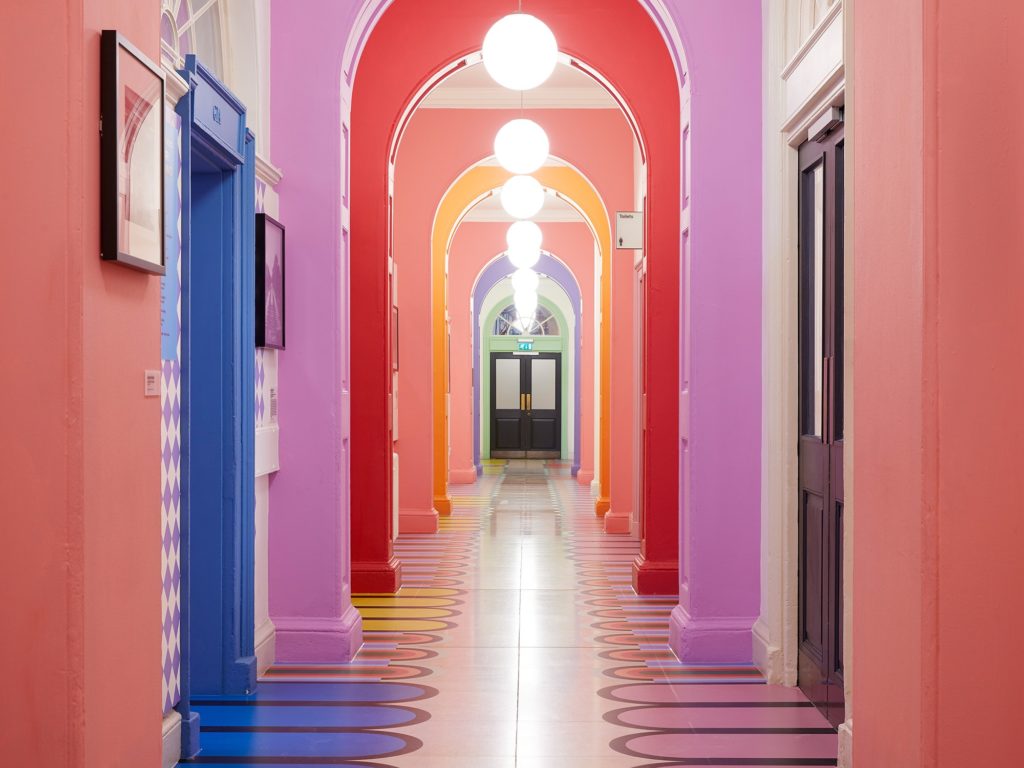
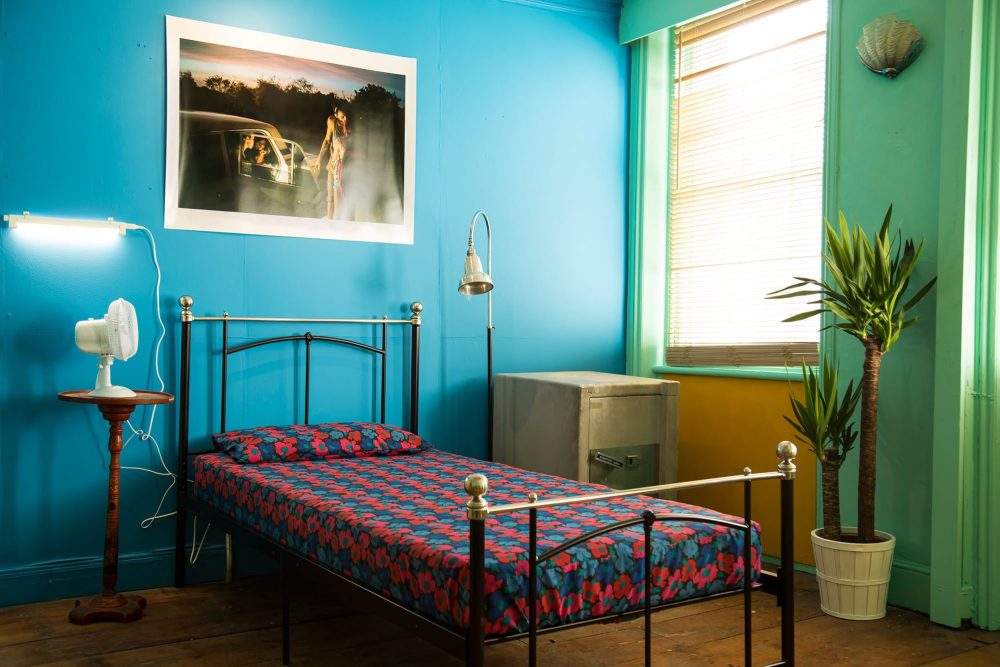
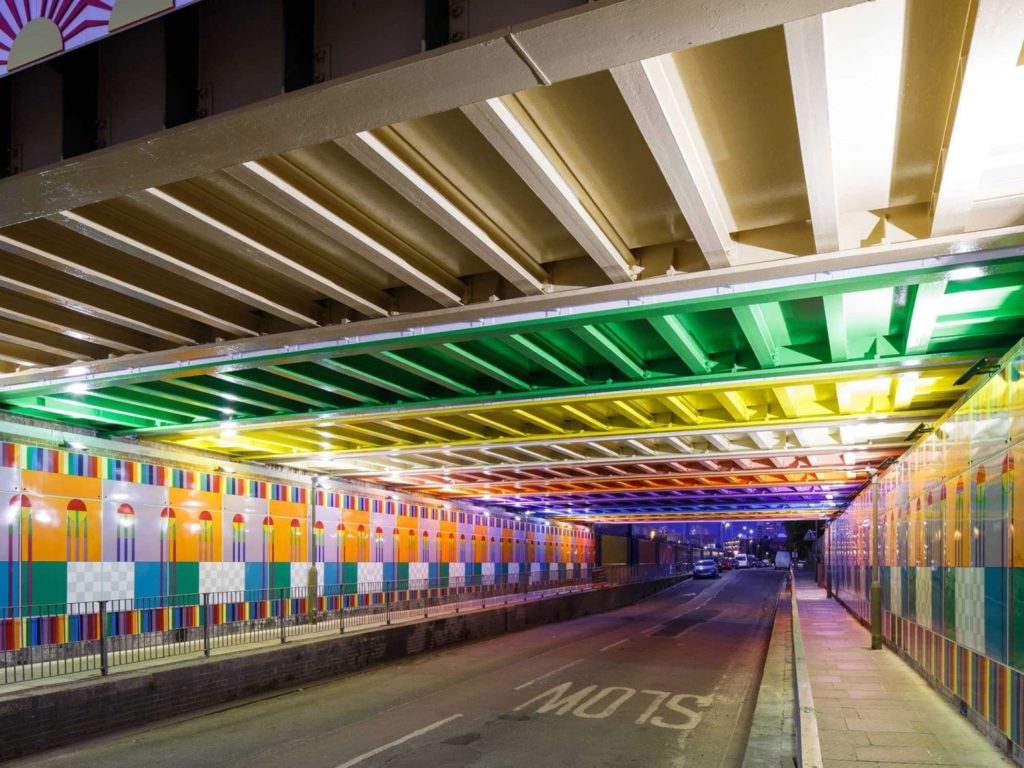
So using bold colors in your work comes naturally to you?
Yinka Ilori: When it comes to my work, it’s about being the loudest in the room and celebrating my two cultures. I can sometimes draw 100 new patterns in one day in my sketchbook. I get inspired by just looking at a brick wall or an object. I then extract visual elements from them to form new shapes and designs. I’ve been surrounded by bright hues from a very young age. As a kid, I saw my mom wear colors so effortlessly, and I’ve inherited this from her and my grandmother, who combined patterns, colors, and shapes very skillfully. I grew up in North London, which used to be a grey neighborhood with brutalist buildings everywhere. Whenever my mother left the house, she brightened up the whole block.
You too brighten up London’s architecture and inject color into urban spaces. Last year you teamed up with studio Pricegore to design the “Colour Palace” in the framework of the London Festival of Architecture last year. How did you approach the project?
Yinka Ilori: The Colour Palace was a pavilion situated right next to the renowned Dulwich Picture Gallery. I collaborated very closely with the architecture studio Pricegore on the whole concept, including the structure itself. The pavilion is a reference to the diverse neighborhood of Peckham, which is just a few miles away. The aesthetic drew inspiration from Nigerian shapes and colors I found at the Balogun Market in Lagos. The atmosphere and energy of this place have blown me away.
Do you still remember how you felt visiting Nigeria for the first time? How old were you?
Yinka Ilori: I was about 11 or twelve years old. My parents told me so many amazing stories about Nigeria, but then you hear all the news on the media reporting about poverty, crime, and corruption. That was quite confusing for me because I didn’t know what to believe. When I finally could see Nigeria with my own eyes, I was overwhelmed by the richness of the culture, the colors, and the energy of the people. It made me understand my identity much better because growing up in London as a black British-Nigerian kid, I was trying to understand what exactly it meant having two nationalities, and I wanted to find a way to celebrate them both. As a kid, I always felt I was leaving out my Nigerian heritage because I’d never lived there, and African culture, in general, wasn’t really celebrated in the UK. So when I finally visited Nigeria, it all started to make sense. A memory that will always stick with me was a situation with a homeless woman at the airport in Lagos. She was sitting on the sidewalk asking for money. When she saw me leaving the airport building she shouted: “Welcome to Nigeria!” And you could tell she meant it from all her heart.
This interview has been edited for length and clarity.





